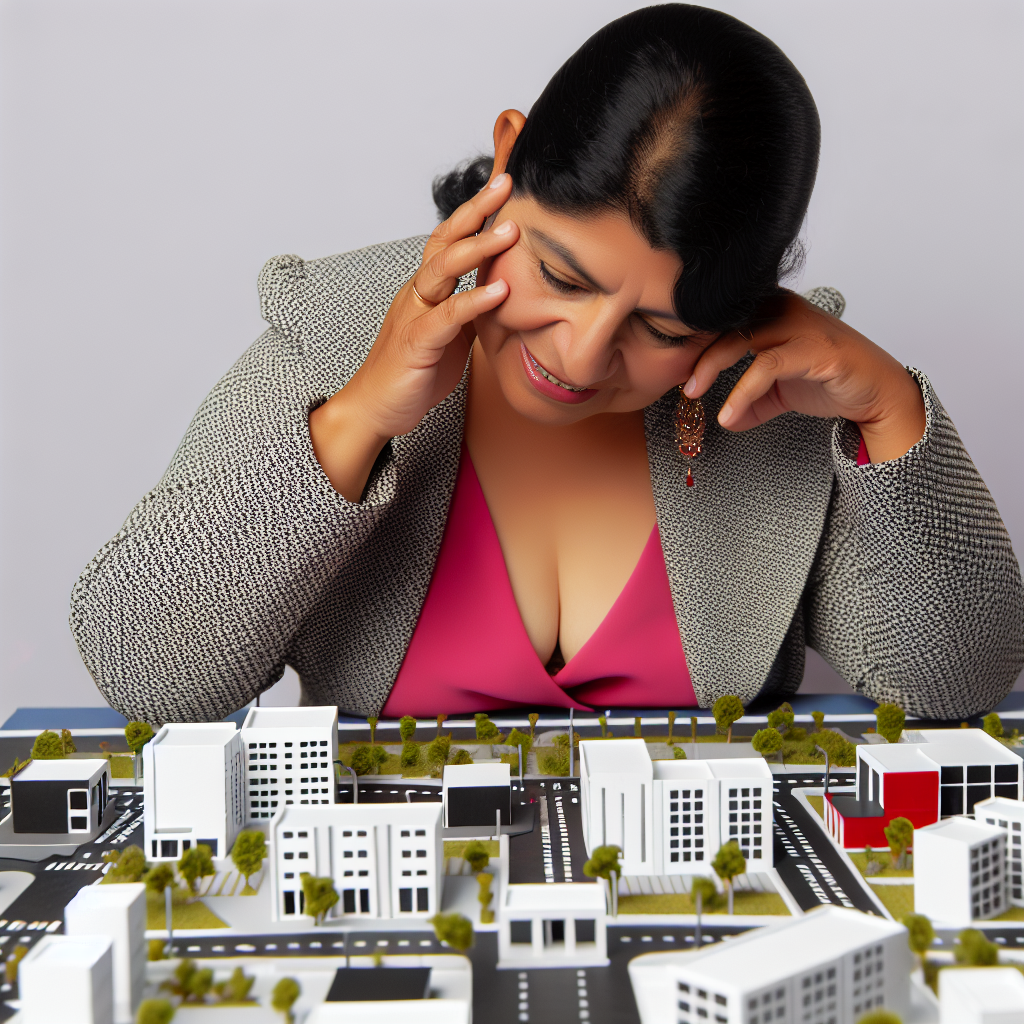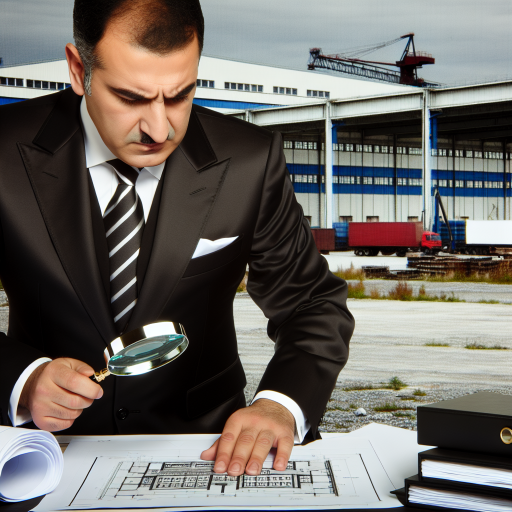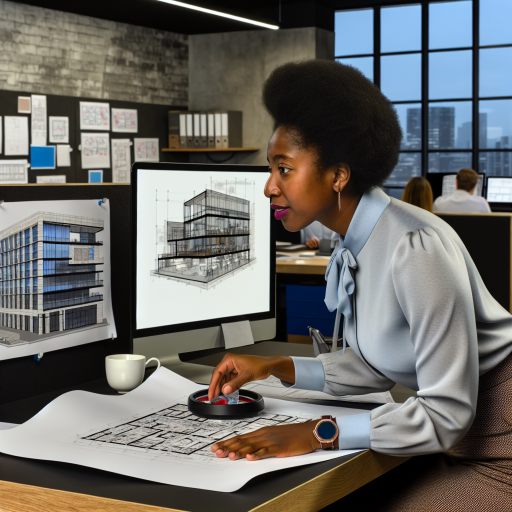Introduction to Mixed-Use Spaces
Definition of Mixed-Use Spaces
Mixed-use spaces combine residential, commercial, and cultural facilities in one area.
These developments create vibrant communities that offer diverse opportunities.
They allow people to live, work, and play in close proximity.
This approach enhances convenience and minimizes travel time.
Consequently, mixed-use spaces cater to a variety of lifestyles.
Importance in Urban Development
Urban development increasingly embraces mixed-use design strategies.
These spaces foster economic growth by attracting businesses and residents.
Furthermore, they reduce urban sprawl and promote sustainability.
As a result, local ecosystems benefit from reduced vehicle emissions.
Moreover, mixed-use developments can revitalize underutilized areas.
Benefits of Mixed-Use Spaces
Mixed-use spaces provide numerous advantages for communities.
- This design encourages social interaction among residents.
- It enhances property values due to increased demand.
- Additionally, it promotes walkability and active transportation.
Moreover, these developments support local businesses through increased foot traffic.
In essence, mixed-use spaces create a sense of place and community identity.
Historical Evolution of Mixed-Use Developments
Early Concepts of Mixed-Use Developments
The concept of mixed-use developments dates back to ancient civilizations.
For instance, the Greeks and Romans integrated residential areas with marketplaces.
This integration fostered community life and economic activity.
Throughout history, such designs allowed cities to flourish.
Post-Industrial Revolution Changes
The Industrial Revolution drastically changed urban landscapes.
As people migrated to cities, developers prioritized single-use buildings.
This shift led to isolated residential neighborhoods removed from workplaces.
Consequently, urban sprawl and traffic congestion became prevalent issues.
Revival of Mixed-Use Spaces
In the late 20th century, there was a renewed interest in mixed-use developments.
Urban planners recognized the need for more integrated communities.
These developments merged residential, commercial, and recreational spaces.
The aim was to create vibrant neighborhoods with walkable areas.
Contemporary Trends and Innovations
Today, mixed-use developments reflect modern lifestyle preferences.
Consumers desire convenience and accessibility within their communities.
As a result, developers focus on creating multi-functional spaces.
Innovative designs often include parks, dining options, and retail stores.
Impact of Technology on Mixed-Use Developments
Technology has profoundly influenced the design of mixed-use spaces.
Smart buildings now incorporate automation and energy-efficient systems.
Such features enhance comfort while reducing environmental impact.
Moreover, technology improves connectivity within these developments.
Future Direction of Mixed-Use Developments
The future of mixed-use spaces looks promising and dynamic.
As urban populations grow, the demand for these developments will rise.
Developers will likely explore sustainable practices to reduce carbon footprints.
Ultimately, mixed-use developments are poised to redefine urban living.
Key Drivers of the Shift
Economic Factors
Economic trends play a vital role in shaping mixed-use spaces.
Urbanization drives demand for diverse living and working areas.
Additionally, rising land costs encourage developers to maximize space.
Mixing commercial and residential uses increases economic viability.
Social Factors
Changes in lifestyles significantly influence real estate trends.
People increasingly prefer walkable neighborhoods and local amenities.
Furthermore, younger generations prioritize community and connectivity.
Mixed-use developments cater to these evolving social preferences.
Environmental Factors
Environmental considerations increasingly impact real estate development.
Sustainable design practices are becoming standard in new projects.
Mixed-use spaces promote reduced reliance on cars, lowering emissions.
These developments often incorporate green spaces and energy-efficient systems.
Gain More Insights: Industrial Property Leasing Tips For Business Owners And Investors
Benefits of Mixed-Use Spaces for Communities
Enhancing Livability
Mixed-use spaces significantly enhance livability in urban areas.
These developments incorporate residential, commercial, and recreational facilities.
Consequently, they create vibrant neighborhoods that improve quality of life.
People can enjoy convenient access to essential services nearby.
These spaces reduce the need for long commutes, saving time and energy.
Promoting Convenience
Mixed-use spaces bring convenience to everyday living.
Residents appreciate having shops and restaurants within walking distance.
This accessibility fosters a sense of community and connection.
Moreover, mixed-use developments often include parks and recreational areas.
Such amenities encourage outdoor activities and social interactions.
Encouraging Economic Growth
These developments stimulate local economies and create jobs.
They attract diverse businesses that cater to residents’ needs.
Local entrepreneurs thrive in vibrant mixed-use environments.
Furthermore, increased foot traffic benefits retail establishments.
Overall, this contributes to the economic revitalization of neighborhoods.
Reducing Environmental Impact
Mixed-use developments promote sustainability and reduce sprawl.
By clustering residences and businesses, they limit land consumption.
Furthermore, they encourage alternative transportation methods.
Walking, biking, and public transit become more viable options.
This shift decreases reliance on automobiles and lowers carbon footprints.
Learn More: How To Identify High-Potential Industrial Property Investments
Challenges in Development and Implementation
Zoning Laws
Zoning laws often create significant hurdles for mixed-use developments.
They dictate land use and can limit flexibility in design.
Changing these laws requires community support and bureaucratic navigation.
Local governments may resist changes, fearing impacts on neighborhoods.
Moreover, inconsistent regulations across jurisdictions complicate projects.
Financing
Securing financing for mixed-use spaces can prove challenging.
Investors often perceive these projects as higher risk.
Funding sources may prefer traditional commercial or residential developments.
Moreover, comprehensive financial models are needed to attract investors.
Successfully demonstrating potential returns is crucial for investor confidence.
Design Complexities
Mixed-use projects present unique design challenges that require creativity.
Combining residential and commercial spaces demands careful planning.
Architects must consider noise, privacy, and accessibility for all users.
Effective design balances the needs of both residential and commercial tenants.
Collaboration among architects, developers, and urban planners is essential.
Delve into the Subject: The Advantages Of Industrial Real Estate For Growing Businesses

Case Studies of Successful Mixed-Use Developments
New York City’s Hudson Yards
Hudson Yards transformed a former rail yard into a vibrant community.
This development integrates residential, commercial, and public spaces seamlessly.
It features luxury condominiums, office buildings, and a shopping center.
Additionally, the area includes parks and cultural venues for residents and visitors.
This blend enhances social interaction and community engagement.
Chicago’s The 606
The 606 is an innovative urban trail that promotes connectivity.
This project transformed an abandoned rail line into a multi-use path.
It connects several neighborhoods, encouraging biking and walking.
Additionally, it features parks and art installations along the route.
This space fosters a sense of community and active lifestyles.
Los Angeles’ The Bloc
The Bloc revitalizes a downtown area with mixed-use offerings.
It combines retail, office space, and residential units in one location.
This development enhances urban convenience for residents and workers.
Moreover, it provides easy access to public transportation and amenities.
The Bloc encourages social interactions among its diverse users.
San Francisco’s Mission Bay
Mission Bay exemplifies successful urban renewal on a large scale.
This area integrates residential, commercial, and educational spaces effectively.
It hosts a major university campus alongside housing and research labs.
Moreover, waterfront parks add recreational opportunities for residents.
Mission Bay illustrates the potential of mixed-use developments to revitalize neighborhoods.
Seattle’s South Lake Union
South Lake Union has transformed into a hub for innovation and lifestyle.
This area features a blend of tech offices, retail spaces, and apartments.
Moreover, parks and waterfront access enhance the living experience.
This development attracts young professionals seeking urban amenities.
Additionally, it showcases how mixed-use spaces can drive economic growth.
Delve into the Subject: Why Warehousing Is Becoming a Hot Commodity in Commercial Real Estate
The Role of Technology in Modern Mixed-Use Spaces
Smart Buildings and Connectivity
Technology drives the evolution of mixed-use spaces.
Smart buildings integrate advanced technology for enhanced functionality.
This technology includes energy-efficient systems and automated controls.
Moreover, connectivity plays a crucial role in modern developments.
High-speed internet and IoT devices foster seamless communication.
Residents enjoy enhanced lifestyles through smart home features.
For instance, smart thermostats manage energy consumption efficiently.
Additionally, security systems provide residents with peace of mind.
Smart lighting adjusts based on occupancy, saving energy.
These innovations improve the tenant experience significantly.
Collaboration and Connectivity
Mixed-use spaces encourage collaboration among residents and businesses.
Shared workspaces enable remote professionals to connect easily.
Technology simplifies scheduling and resource management.
Residents can reserve spaces for meetings or events online.
Moreover, community apps foster local engagement and information sharing.
These platforms promote social interaction and a sense of belonging.
Ultimately, technology transforms living and working experiences.
Sustainability and Efficiency
Smart technology also contributes to sustainability in mixed-use developments.
Energy management systems reduce overall consumption significantly.
Renewable energy sources integrate seamlessly into building operations.
For example, solar panels can power shared amenities effectively.
Additionally, smart waste management systems optimize disposal processes.
This ensures that both residential and commercial areas remain clean.
Consequently, these practices enhance the attractiveness of mixed-use spaces.
Technology plays a pivotal role in modern mixed-use environments.
Future Predictions for Mixed-Use Spaces in Commercial Real Estate
Adapting to Urbanization
The rise of urbanization drives the demand for mixed-use spaces.
More people seek convenience and accessibility in their living environments.
Cities will prioritize developments that combine residential and commercial elements.
This will create vibrant neighborhoods where people can live, work, and play.
Integration of Technology
Technology will play a significant role in the evolution of mixed-use spaces.
Smart buildings will enhance energy efficiency and comfort for residents.
Moreover, digital platforms will become crucial for managing mixed-use properties.
Property owners will increasingly rely on tech solutions for maintenance and security.
Sustainability Focus
There will be a strong emphasis on sustainability in future developments.
Mixed-use spaces will incorporate green building practices to reduce environmental impact.
Urban planners will focus on creating spaces that promote eco-friendly transportation.
Furthermore, renewable energy sources will become standard in these developments.
Community Engagement
Community engagement will shape the design and function of mixed-use areas.
Developers will increasingly involve local residents in planning processes.
This will ensure the spaces reflect the needs and preferences of the community.
Hosting local events will foster a sense of belonging among residents.
Diverse Housing Options
The demand for diverse housing options will influence future mixed-use developments.
Developers will create a range of units, catering to various income levels.
This will foster inclusive communities and promote social equity.
Additionally, smaller living units will become more popular among younger demographics.
Health and Wellness Considerations
Health and wellness will be central to mixed-use design in the coming years.
Outdoor spaces and recreational facilities will become essential features.
Walkable neighborhoods will promote a healthy lifestyle for residents.
Furthermore, access to fresh food options will be prioritized.
Regulatory Support
Government policies will increasingly support mixed-use development initiatives.
Incentives for developers will encourage investment in these types of projects.
Regulatory flexibility will likely facilitate faster approvals for mixed-use spaces.
This will help meet the growing demands of urban populations.




